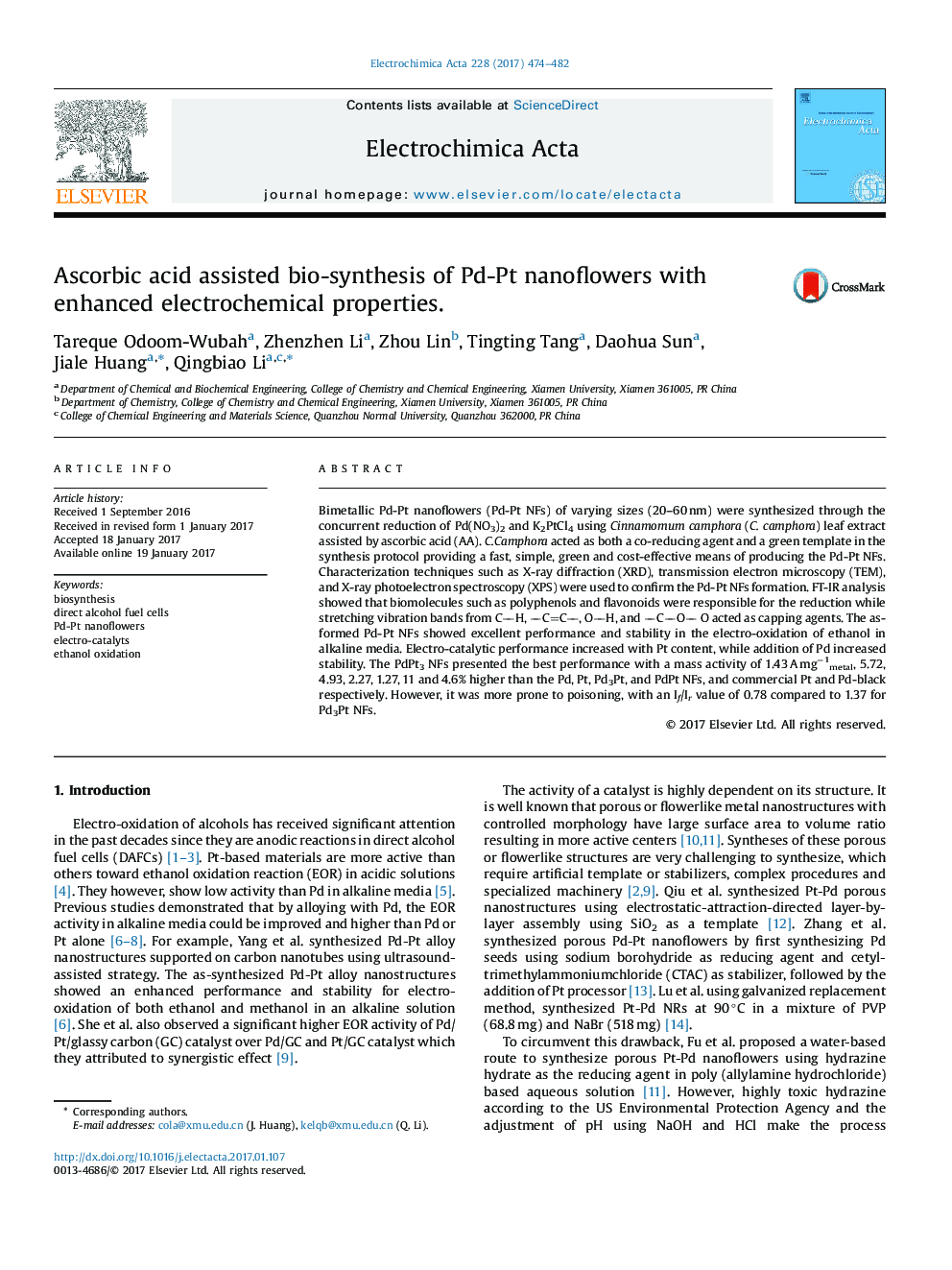| کد مقاله | کد نشریه | سال انتشار | مقاله انگلیسی | نسخه تمام متن |
|---|---|---|---|---|
| 4767465 | 1424129 | 2017 | 9 صفحه PDF | دانلود رایگان |

- Plant-mediated synthesis of porous Pd-Pt alloy NFs with dominant (111) planes.
- The biogenic Pd-Pt NFs were used directly in ethanol oxidation without special treatment.
- The PdPt3 NFs is 4.1, and 9.1 more active than commercial Pd and Pt-black toward ethanol oxidation.
- Electrocatalytic activity increased with Pt content, and stability with Pd addition
Bimetallic Pd-Pt nanoflowers (Pd-Pt NFs) of varying sizes (20-60Â nm) were synthesized through the concurrent reduction of Pd(NO3)2 and K2PtCl4 using Cinnamomum camphora (C. camphora) leaf extract assisted by ascorbic acid (AA). C.Camphora acted as both a co-reducing agent and a green template in the synthesis protocol providing a fast, simple, green and cost-effective means of producing the Pd-Pt NFs. Characterization techniques such as X-ray diffraction (XRD), transmission electron microscopy (TEM), and X-ray photoelectron spectroscopy (XPS) were used to confirm the Pd-Pt NFs formation. FT-IR analysis showed that biomolecules such as polyphenols and flavonoids were responsible for the reduction while stretching vibration bands from CH, CC, OH, and CO O acted as capping agents. The as-formed Pd-Pt NFs showed excellent performance and stability in the electro-oxidation of ethanol in alkaline media. Electro-catalytic performance increased with Pt content, while addition of Pd increased stability. The PdPt3 NFs presented the best performance with a mass activity of 1.43Â AÂ mgâ1metal, 5.72, 4.93, 2.27, 1.27, 11 and 4.6% higher than the Pd, Pt, Pd3Pt, and PdPt NFs, and commercial Pt and Pd-black respectively. However, it was more prone to poisoning, with an If/Ir value of 0.78 compared to 1.37 for Pd3Pt NFs.
Journal: Electrochimica Acta - Volume 228, 20 February 2017, Pages 474-482